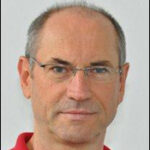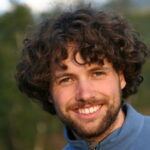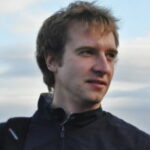Forschungszentrum Jülich

Forschungszentrum Jülich pursues interdisciplinary research on solving the grand challenges facing society in the fields of health, energy, environment, and information technologies. With its competencies in these areas, work at Jülich focuses on long-term, fundamental, and multidisciplinary contributions to science and technology as well as on specific technological applications. As one of the largest research institutions in Europe, Forschungszentrum Jülich provides system solutions for complex scientific questions by integrating a variety of key disciplines, in particular physics, and an outstanding scientific infrastructure, such as its supercomputing facility.
The division Theoretical Physics of Living Matter of the Institute of Biological Information Processing employs theory, modelling, and large-scale simulations to study and understand the structure, self-assembly, and dynamics of complex fluids, active soft matter, and living matter – on the basis of physical principles. The focus is on the investigation of systems far from thermal equilibrium, in particular the collective behavior of mesoscopic self-propelled objects as well as the flow behavior of biofluids.
G. Gompper, R. G. Winkler, D. A. Fedosov, and J. Elgeti have a long-standing experience in modeling and simulations of individual microswimmers – bacteria, sperm, algae – and coarse-grained agents – active Brownian particles and squirmers –, and in the study of their collective behavior.
Bohan Zhang I am originally from China and moved to London to start secondary school when I was 15 years old. I studied Materials Science at Imperial College London for my undergraduate as well as Master’s degree. During my undergraduate I started to be interested in biomaterials modelling. Then in my final year of my Bachelor’s degree, I decided to take a master’s degree in Physics and to specialise in theoretical/computational biophysics.
Shubham Anand joined the Indian Institute of Science Education and Research (IISER) Mohali in 2015 under the BS-MS Dual degree program under DST (Department of Science and Technology, Government of India) Inspire fellowship, after clearing JEE Advanced 2015. Completed my post-graduation in 2020 with Physics as a major subject. The Interdisciplinary environment drove my interest in Biophysics due to my broad interest in physics. However, what fascinates me the most is the deep consequences of Physical Biology and Soft Matter Physics. In particular, I am fascinated by systems where strong correlations lead to novel phenomena. Pursued my Master Thesis in Biophysics, to explore the same. Now, I have chosen the ITN-PHYMOT project which will allow me to work in an international and interdisciplinary environment that I believe is essential for the modern good science.

Bohan Zhang

Shubham Anand

Dmitry Fedosov
Universitat Illes Balears

IMEDEA is a joint research centre of the University of the Balearic Islands (UIB) and the Spanish National Research Council (CSIC). It is consistently ranked as one of the best institutes within the Natural Resources area of CSIC. IMEDEA emphasizes interdisciplinary approaches to oceanography, global change and ecology research and it provides many opportunities for resources and interactions with researchers in several branches of science, including biology, physics, chemistry, geology, and mathematics. IMEDEA has access to a range of facilities at the institute and at the Scientific-Technical Services of the University of the Balearic Islands. Further services and facilities are available within CSIC, the largest research organisation in Spain.
The research group on Physico-Biological Interactions in the Ocean (InFiBiO) at IMEDEA combines modelling, wetlab and fieldwork to study the biophysics of aquatic microorganisms, from single-cells to interacting populations. It is a growing interdisciplinary group hosting international researchers from physics, biology and engineering backgrounds, and enjoys a wide range of active collaborations within Europe and beyond.
M. Polin and I. Tuval have a long experience integrating wetlab experiments and modelling to study microbial motility -bacteria, green algae, dinoflagellates- from the dynamics of individual beating flagella to taxis and collective behaviour. Being biophysicists, their research often borrows concepts and approaches from soft matter, active matter and dynamical systems.
Medea Zanoli After pursuing a bachelor in Physics at the Univeristy of Trento (Italy), I developed an interest for Climate Sciences and enrolled to a master in Environmental Physics at the University of Bremen (Germany), specializing in atmospheric chemistry modelling. Now, I joined the InFiBiO (Physical-Biological Interactions in the Ocean) group at the Mediterranean Institute for Advanced Studies (IMEDEA), and I’ll switch from the large-scale world of atmospheric transport to the realm of the tiny, digging into the role of parasitism during phytoplankton blooms. In my PhD, I’ll try to disentangle the motility and the physical mechanisms characterizing the interaction between a flagellated host and its flagellated parasite.
Luc Zorrilla After studying in France a general bachelor in natural sciences, I turned to KTH in Stockholm to pursue a master in theoretical physics. The diversity of courses and backgrounds got me interested in biophysics and environmental physics. I did my master thesis at KTH on models of statistical genetics, i.e. the distribution of genome sequences in a population of viruses. Now I’m looking at cell flagellas dynamics on a more experimental side.
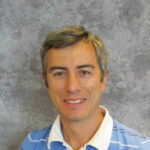
Marco Polin
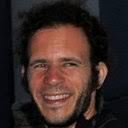
Idan Tuval
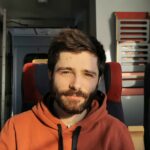
Luc Zorrilla
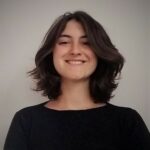
Medea Zanoli
Technical University Denmark
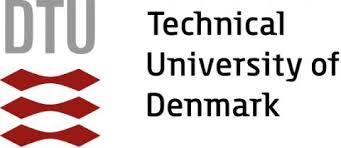
The National Institute of Aquatic Resources at the Technical University of Denmark (DTU-Aqua) has about 250 employees. DTU Aqua’s research addresses the environmental consequences and interactions of human activities in the aquatic environment and helps resolve the conflict between exploitation and conservation. The Centre for Ocean Life at DTU-Aqua is a cross-disciplinary effort hosting about 25 PhD students and post docs and includes physicists, biologists, and mathematicians. The overarching aim of the Centre is to develop a fundamental understanding and predictive capability of marine ecosystems through a trait-based approach.
Professor Thomas Kiørboe is the leader of the Centre for Ocean Life. The scope of Kiørboe’s research is to achieve a mechanistic understand of the functional ecology of marine microorganisms, and to use that insights to develop predictive models of marine ecosystems. His current emphasis is on small-scale biological-physical interaction in aquatic microorganism.
Federica Miano is from Italy, and she graduated in Chemical Engineering – both BSc and MSc – at University of Naples Federico II. Her scientific and research interests include fluid dynamics, mechanics of complex fluids, microfluidics, and mostly their application to the study of the motility of microorganisms within the fields of marine and human biology.
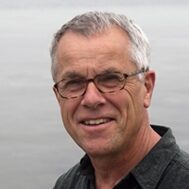
Thomas Kiørboe
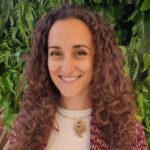
Federica Miano
ETH Zürich

Roman Stocker is a full professor in the Department of Civil, Environmental and Geomatic Engineering at ETH Zurich. He moved to ETH in 2015 after 10 years on the faculty at MIT and brings strong expertise in microbial motility, microfluidics, microbial imaging, small-scale fluid mechanics, and microbial ecology. Stocker’s focus is at the interface between biophysical processes and the ecology of microbes. His research contributions to date include multiple studies on bacterial chemotaxis in the ocean, on phytoplankton gyrotaxis and how it can lead to dense cell aggregations often observed by oceanographers, on rheotaxis, on the motile response of phytoplankton to turbulence, on the fluid dynamics of corals, etc. Stocker leads a group of 22 postdocs and PhD students, with a highly interdisciplinary composition (engineers, physicists, mathematicians, microbiologists, biologists, chemists) that ensures that research questions are addressed from multiple angles. Stocker initiated and now co-directs a Simons Collaborative on the Theory of Microbial Ecosystems, a 15M$ research program funded by the Simons Foundation that brings together nine PIs across the US and Europe to study the principles by which microbial communities assemble and function.
Riccardo Foffi comes from Rome, Italy and obtained its Master’s degree in Physics of Biosystems at Sapienza University of Rome, focusing mainly on theoretical and computational modeling. He has performed numerical studies on the properties of supercooled water and the self-assembly of DNA block copolymers. After its first encounter with microorganisms in a lab, he decided to delve deeper into the experimental side of Biophysics: during his PhD, he will study the motility and foraging of microorganisms in oceanic environments. His main objective is the development of microfluidic methods to generate dynamic and turbulent landscapes, where microbial behavior can be analyzed in realistic conditions.
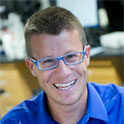
Roman Stocker

Riccardo Foffi
CNRS
![]()
Institut Lumière Matière in CNRS/Université Claude Bernard Lyon1 is a research center in physics covering all aspects of condensed matter. The “Liquid & Interfaces” group at Institut Lumière Matière is concerned by all situations where interfaces are active, including microfluidic, soft matter, fluid dynamics, biophysics and active matter. The group consists of 13 academic staff members and 30 people in total and publishes about 30 articles/year. More specifically C. Cottin-Bizonne, C. Ybert have a strong expertise in the description of complex dynamics in soft-condensed matter and notably in active systems: from artificial self-propelled colloids to magnetotactic bacteria. F. Detcheverry will bring complementary expertise in modeling and theory of active motion.
Tommaso Pietrangeli is originally from Italy; he graduated in Physics – both BSc and MSc – at the University of Rome “La Sapienza”. From both his academic background and personal point of view, his interests lie in interdisciplinary scientific research, with a particular focus on understanding the behaviours of biological living systems through experimental investigation and theoretical modelling.
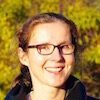
Cecile Cottin-Bizonne

Christophe Ybert
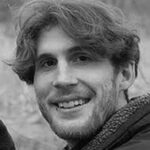
François Detcheverry
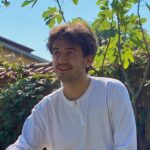
Tommaso Pietrangeli
Sapienza University of Rome
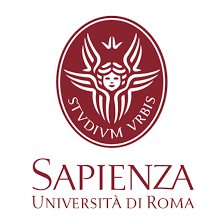
Sapienza University of Rome, founded in 1303 by Pope Boniface VIII, is one of the oldest universities in the world and the largest university in Europe. Since its foundation, Sapienza has contributed to the development of Italian and European science and culture in all areas of knowledge. The main campus, situated close to the city centre, is a real city within a city where teaching activities are integrated with 59 libraries, 21 museums as well as comprehensive student services. Sapienza offers a vast array of courses including 290 degree programmes, 74 PhD courses, 200 one to two years professional courses and 121 Specialization Schools in many disciplines, run by 63 Departments and 11 Faculties. Sapienza fosters international exchange through special programmes for visiting researchers and professors and through dedicated services. Sapienza adopts the principles set out in the European Charter for Researchers and in the Code of Conduct for the Recruitment of Researchers.
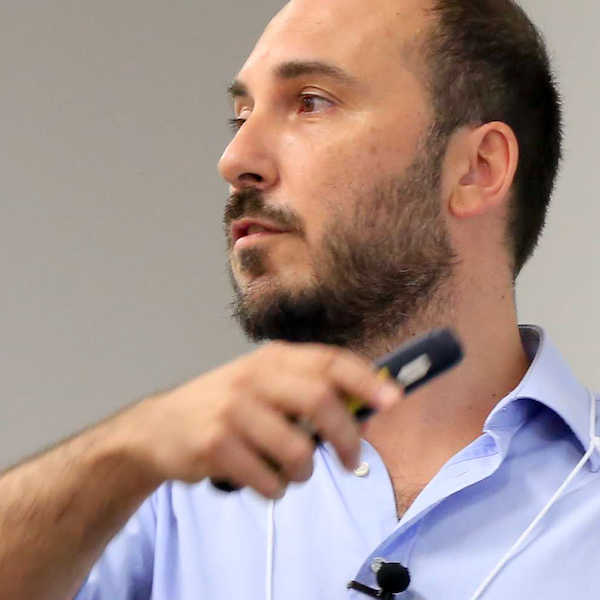
Roberto DiLeonardo
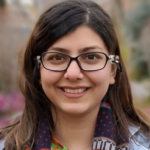
Farnoosh Joulaeian
Universität Basel
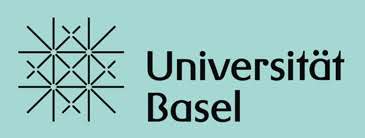
Knut Drescher is Associate Professor at the Biozentrum Department of the Universität Basel (Uni Basel), Switzerland. He moved to the Uni Basel after 7 years as a research group leader at the Max Planck Institute for Terrestrial Microbiology and Professor at the Philipps-Universität Marburg. The main research focus of the group is to understand microbial collective behaviors, including motility-based and growth-based behaviors. To study these microbial behaviors, Drescher combines experimental methods from physics, molecular biology, and genetics, with simulations and mathematical models. The group currently consists of 4 postdocs, 8 PhD students, and 3 master students, with backgrounds in physics and molecular biology, which are supported by grants from the ERC and the German Research Foundation.
The Uni Basel employs, hosts, and supervises PhD students, and grants doctoral degrees. The doctoral student in this node will be admitted as a PhD student in the Biozentrum of the Uni Basel. The Uni Basel has approxiamtely 12.500 students and particular research strengths in physics and molecular biology.
Eva Jiménez Siebert I am originally from Spain, but moved to Marburg, Germany, for studying physics. During my bachelor studies I started to develop an interest for interdisciplinary research, with a particular focus on biology. I was fascinated by the potential of combining two very different ways of approaching scientific questions, and this drew me to write my BSc-thesis and my MSc-thesis in biophysics. I am now working as a PhD-Student in the lab of Prof. Knut Drescher at the Biozentrum in Basel. My main research focus lies in the exploration of bacterial biofilms and motility in microfluidic systems, as well as the design of microfluidic assays, and programming of automated confocal microscopy routines with live sample-microscope feedback.

Knut Drescher

Eva Jiménez Siebert
Julius-Maximilians-Universität Würzburg

The Julius-Maximilian-University Würzburg was founded more than 600 years ago. At UWU, tradition stands next to modern research and teaching: About 400 professors in ten faculties supervise more than 28,000 students. The University of Würzburg offers more than 200 study programs in fields like humanities and social sciences, the natural and life sciences, including the Joint European Master in Space Science and Technology. So far, 14 Nobel laureates have conducted their research here.
Markus Engstler is Professor and Chair of Cell and Developmental Biology at the University of Würzburg Biocentre. The research in his laboratory focuses on genetic, cellular and biophysical aspects of parasitism. He has established the African trypanosome as a powerful model system for studying flow and motion at scales ranging from molecules to cells. Physical methods are combined chemical and molecular biological techniques. The core research group consists of 5 postdocs and 8 students, and has been supported by grants from the DFG, BMBF, Wellcome Trust and Leverhulme Trust.
Narges Jamshidi I come from Iran and graduated from Sharif University of Technology in Iran (Iran’s top university) with a master’s degree in Physics. I have experience in studying and modelling protein dynamics, their conformational changes, and investigating the structure and mechanism of nano swimmers
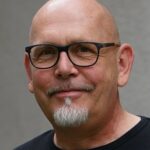
Markus Engstler

Narges Jamshidi
Synoptics Ltd
![]()
Synoptics Ltd (www.synoptics.co.uk) Synoptics Limited was founded in 1984 in Cambridge, England. Its initial objective was to commercialize original work undertaken in the Engineering Department of Cambridge University in the field of Image Processing. The company manufactures a range of products which it offers directly to end users in three market areas:
The Syngene division, formed in 1997, produces equipment for the documentation and analysis of electrophoresis gels used in DNA analysis.
The Synbiosis division, formed in 1998, provides equipment to microbiologists to automate the process of microbial colony counting.
The Synoptics Health Division, formed in 2012, provides equipment for use in hospital washrooms to monitor the efficiency of SSD washrooms.
All our products result from a combination of end-user needs and a significant requirement for imaging technology. We have a small, but dedicated, team of software developers, electronic engineers and hardware experts who use their expertise to produce instruments that are both effective and easy to use. Our instruments are sold worldwide through our own sales team and international distributors.
Allen Donald: Allen’s background is Molecular Biology research and software development. Allen has worked mainly on the software side of a number of the current instruments sold by Synoptics.
Francesco Ferraro: Francesco is a Senior Software Developer who is currently working on two of our major software applications. He has several years’ experience in the development of image analysis software.
Tim Smith: Tim has developed, produced and integrated numerous electronic components and boards into the range of Synoptics instruments over 25 years. Tim also has a great deal of experience of cameras, lenses and all things optical.
Morten Kals is from Lier in Norway. He has a Masters degree in Biotechnology from the University of Cambridge and graduated with distinction in Engineering Physics from the University of British Columbia.
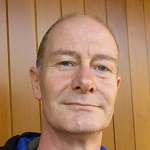
Allen Donald
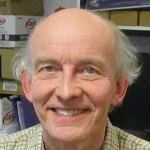
Tim Smith

Francesco Ferraro

Morten Kals
University of Cambridge
![]()
Prof. Pietro Cicuta is Professor of Biological Physics at the department of Physics at University of Cambridge. Currently, his group consists of 6 PostDocs, and 9 PhD students. Active on a number of questions involving quantitative biology and physical modelling. The main area of activity revolves around understanding synchronisation of motile cilia in biological tissues that may have importance for medicine and various cilia pathologies (ERC-consolidator grant). Other projects are on understanding links between regulation of gene expression in bacteria and physical structure of the bacterial nucleoid (HFSP), and on the regulatory role of lipid composition in membranes (EPSRC). Pietro Cicuta is author of 77 peer-reviewed publications. He is spokes-person for the Strengths of the Biological and Soft Systems Sector of the Cavendish Laboratory (BSS).
Prof. Raymond E. Goldstein FRS is the Schlumberger Professor of Complex Physical Systems in the Department of Applied Mathematics and Theoretical Physics (DAMTP) of
the University of Cambridge, a post he has held since 2006. His research group of 8 is split between students and postdocs coming from biology, physics, and mathematics and
representing both experimentalists and theorists (and those who do both). The group focuses primarily on problems in biological physics associated with the evolution of multicellularity,
biological fluid dynamics, and collective behavior. His work has been supported by the EPSRC, BBRSC, Leverhulme Trust, ERC, Gordon and Betty Moore Foundation and the Wellcome Trust.
Erika Causa is from southern Italy. She received a BSc and MSc in Chemical Engineering from the University Federico II of Naples. Her scientific interests include dynamics of complex fluids and soft matter, with a focus on biological application.
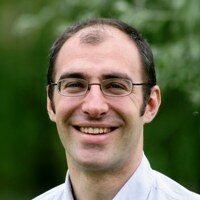
Pietro Cicuta
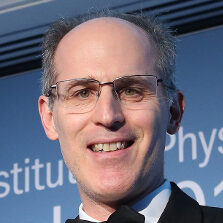
Raymond Goldstein
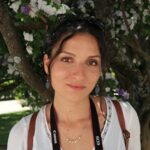
Erika Causa
École Supérieure de Physique et de Chimie Industrielles de la Ville de Paris
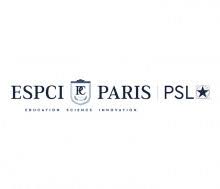
ESPCI (https://www.espci.fr/en/) is a leading French “Grande Ecole” founded in 1882, educating undergraduate and graduate students through a programme merging basic science and engineering, as well as a world-renowned research institution. ESPCI Paris has setup a tradition of excellence in research, with distinguished faculty that have contributed to its history, such as Pierre and Marie Curie, Paul Langevin, Frédéric Joliot-Curie, Pierre-Gilles de Gennes and Georges Charpak. The five Nobel laureates in this list are emblematic of the exceptional ethos embodied in the permanent culture of excellence at ESPCI Paris.
ESPCI Paris hosts 11 research units, covering the fields of physics, chemistry and biology. Favouring interdisciplinary, and operating at the frontiers between fundamental research and innovation, are two major objectives of ESPCI Paris. This is achieved through a flexible organisation ensuring a cross fertilization between scientific disciplines, as well as a direct connection between basic science and applications. One of ESPCI’s distinctive features is that it carries out fundamental research into areas of major interest to industry, while developing various approaches to practical industrial problems through the deep, fundamental understanding of the mechanisms at play.
Scientists at ESPCI Paris publish more than one scientific paper a day, and at the same time apply for one patent a week and create several technology-driven start-ups every year – over the last 10 years. ESPCI is also a part of Paris Science et Lettres (PSL) Research University (https://www.univ-psl.fr/en) – an ambitious collaboration project of 26 research institutions in a broad range of disciplines from engineering, chemistry and oncology to economics, management, the humanities and the performing arts.
Peixin Zhang I come originally from China and received a Bachelor’s degree in Material Physics and a Master’s degree in Optical engineering from the school of physics, Northwest University in China. During my Master’s degree, active matter aroused my highly curiosity. I studied antibacterial property of the slippery porous surfaces, the bacteria swimming on confined surfaces. Many treasures in active matter are yet to be discovered. In my Ph. D, I will study further on the transport of bacteria in disordered and complex environments.
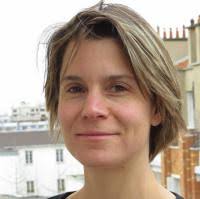
Anke Lindner
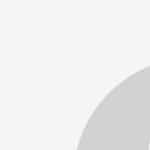
Eric Clement
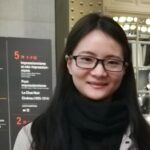
PeixinZhang
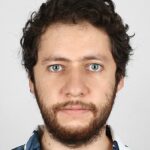
Lyncée Tec SA
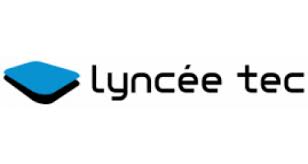
Lyncée Tec is an innovative, dynamic and customer focused company based and founded in 2003 in Lausanne, Switzerland offers matured digital holography microscopes through a worldwide network of distributors. Additionally of standard product portfolio, Lyncée Tec develops customized system to specific needs, and supplies OEM solutions. In the field of 4D microscopy, and in particular 3D tracking, Lyncée has a unique knowledge of customer needs, applications, business development, R&D, manufacturing, assembling, quality assurance, and distribution. Collaborative projects with the Swiss Federal Institute of Technology (EPFL), Lausanne, Switzerland provides access to wide range of know-how and expertise, resulting in numerous patents held by or licensed to Lyncée Tec. Together, a highly qualified multidisciplinary team of more than 25 physicists, biologists and engineers specialized in optics, software, mechanics, and in bio & micro-and nano-technology applications, ensures the presence of the requisite skills in terms of advices, technical execution and training.
Patryk Nienaltowski comes from Warsaw, Poland. He has a Master’s degree in Mechatronics with a specialization in Photonic Engineering from the Warsaw University of Technology. He is interested in the combination of engineering and biology and he is fascinated by the use of holographic techniques to better understand the world around us.

Yves Emery

Etienne Cuche
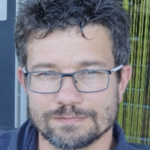
Tristan Colomb
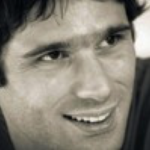
Benjamin Rappaz

Patryk Nienaltowski
Associated Partners
The associated partner institutions actively participate in the activities organised in the network by providing training in soft-skill and scientific training modules, hosting secondments, and providing specialized courses.
Cairn

Cairn Research is an independent scientific instruments manufacturer based in Kent, England. They design and build an extensive range of equipment for fluorescence microscopy and related technologies.
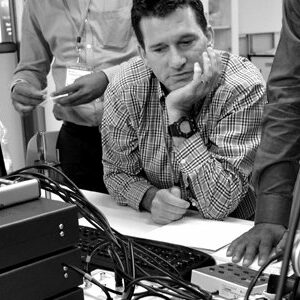
Jeremy Graham
IFP Energies Nouvelles
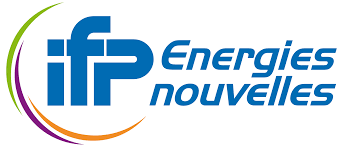
The IFP Energies nouvelles (IFPEN) is a major research and training player in the fields of energy, transport and environment. From research to industry, technological innovation is central to all its activities, structured around three strategic priorities: sustainable mobility, new energies and responsible oil and gas. As part of the public-interest mission tasked by the public authorities, IFPEN focuses on:
providing solutions to take up the challenges facing society in terms of energy and climate change, promoting the transition towards sustainable mobility and the emergence of a more diversified energy mix; creating wealth and jobs by supporting French and European economic activity, and the competitiveness of related industrial sectors. An integral part of IFPEN – its graduate engineering school, IFP School – prepares future generations to take up these challenges.
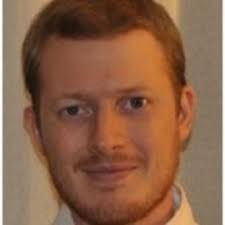
Valentin Guillon
Agencia Estatal Consejo Superior de Investigaciones Ciéntificas (CSIC) – Institut de Ciències del Mar (ICM)

The Institut de Ciències del Mar (ICM) is the fourth largest research institute of the Spanish National Research Council (CSIC) and the largest dedicated to marine research. Under the motto “Ocean Science for a Healthy Planet,” the ICM conducts frontier research and foster both knowledge and technology transfer on topics related to ocean and climate interactions, conservation and sustainable use of marine life and ecosystems, and impact mitigation of natural and anthropogenic hazards. In-depth knowledge, determined action, and coordinated management are essential to confronting these global challenges, thereby driving sustainable development of humankind.
The research group of Esther Garcés is interested in plankton dynamics, its physical-biological interactions in marine systems, particularly noxious and toxic phytoplankton species, their abundance and activity, and the ecosystem effects of their proliferations. Their research is mainly focussed on the factors that regulate the community structure of microorganisms, and how biological mechanisms influence these parameters. They evaluate the diversity of coastal phytoplankton and their biogeography, study their life cycles and strategies; quantify their growth and loss rates and their interactions with the planktonic community, focussed now in parasitism.
The University of Warwick

The University of Warwick (est. 1965) is one of the top universities in the UK and is internationally renowned for research. Ranked 51st by the QS World University Rankings (2016), and UK 7th in the 2014 Research Excellence Framework (REF) it has a strong international outlook (45th most international university in the world by THE 2016). The Physics Department (6th in the UK for Physics outputs) has a strong track record in research funding, with nearly 15,000,000EUR for H2020 projects alone in the last 5 years. Physics has a strong track record of attracting national and international staff, graduate students and research funding as well as hosting a substantial portfolio of industrial funded-research collaborations. The Centre for Mechanochemical Cell Biology (CMCB), launched in 2010, focuses on molecular and cellular mechanisms driving active self-organisation in living systems. It comprises 14 labs from Life Sciences, Medical School, Engineering, Physics and Mathematics, including two Wellcome Trust Senior Investigators, and has a strong interest in microtubules and molecular motors. Dr. Marco Polin is an Assistant Professor in the Physics Department, since 2013, and CMCB group leader, since 2016. His group, comprising 1 PDRA and 3 PhD students, combines experiments and modelling to study microbial movement and its connection to physiological processes. Since 2005, Polin has authored >20 publications (incl. 1 Science, 1 PNAS, 1 eLife, 1 Nat. Comm., 9 Phys. Rev. Lett.), received over 1200 citations, and was granted one US patent. His research helped establish the alga Chlamydomonas reinhardtii as an important model system in biophysics.
Ben Gurion University of Negev

Avraham Be’er, the former Zuckerberg Career Development Chair for Water Research, is a professor of physics in the area of physics of biological systems and complex dynamics, in Ben Gurion University of the Negev. Be’er is holding a dual affiliation at both the Department of Physics in the main campus in Be’er Sheva and in the Institute for Water research in Sede Boker. On December 2019, Be’er was awarded with the VP and Dean Research & Development Award for Ground-Breaking Research.
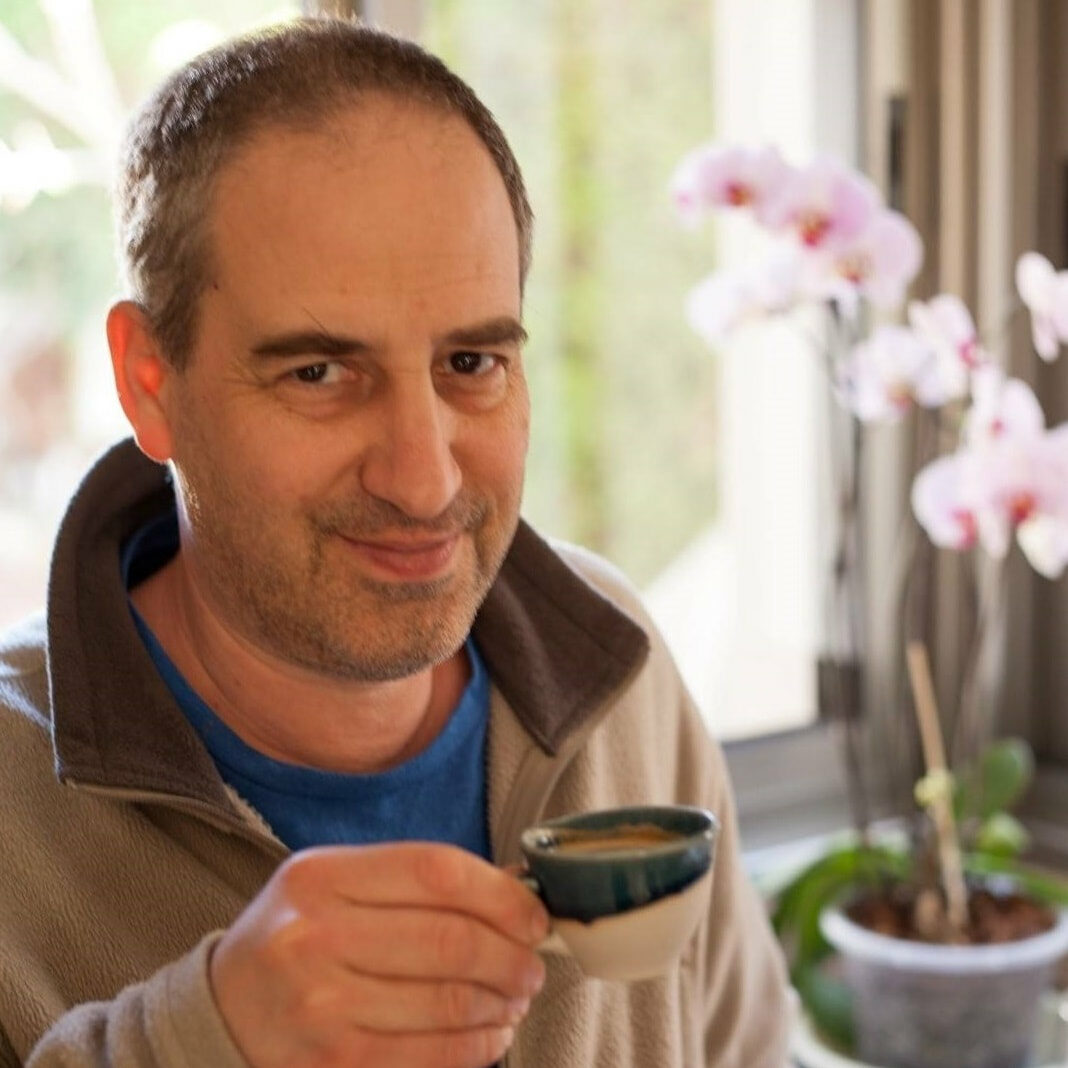
Avraham Be’er


